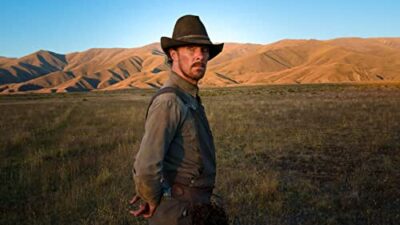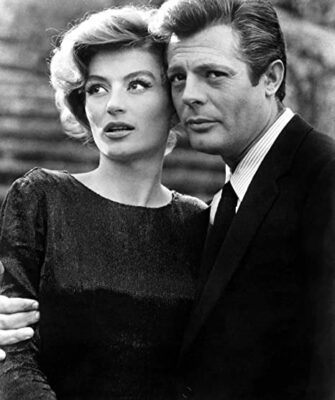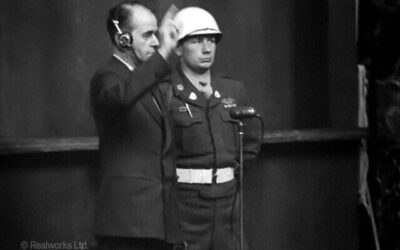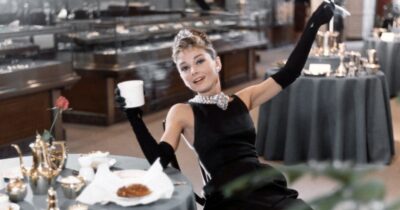





The International Documentary Association just announced the nominees for its 37th annual awards, and we’re screening or soon to screen almost a dozen from this cinematic treasure trove:
FAYA DAYI is a triple nominee for Best Feature, Director and Cinematography and is available on Laemmle Virtual Cinema.
NOT GOING QUIETLY also garnered three nominations: Best Feature, Director and Writing. It, too, is on LVC.
We open the animated FLEE (Best Feature and Director) in January.
We have Best Feature nominee WOJNAROWICZ: F**K YOU F*GGOT F**KER now on Laemmle Virtual Cinema.
We open Best Feature nominee WRITING WITH FIRE on November 26 at the Royal.
Pare Lorentz Award Winner and Best Cinematography nominee THE FIRST WAVE opens this Friday at the Monica Film Center. The filmmaker will attend for Q&A’s after the 7:30 PM screening on Saturday, November 20 and after the 4:40 screening on Sunday, November 21.
Best Cinematography nominee ASCENSION is available now on LVC.
Best Music Documentary Nominee LYDIA LUNCH is now on LVC.
We open Best Editing Nominee PROCESSION this Friday at our Glendale theater.
Finally, we open ABC News VideoSource Award Nominee LIKE A ROLLING STONE: THE LIFE AND TIMES OF BEN FONG-TORRES November 26 at the Monica Film Center.


“The woman, Fahrije (Yllka Gashi), is looking for her husband, one of the missing, who disappeared years ago during the Kosovo War. Now, with her two children and a disabled father-in-law, she struggles to keep the family going. She labors with the beehives that her husband once managed, selling jars of honey at a local market. Sales are modest and sometimes close to nonexistent, but the bees are her only means of scraping together a meager living. Every so often, she meets up with a women’s collective whose members face the same hurdles under the unhelpful watch of the town’s men. And she keeps looking for her husband — a haunting, troubling phantom.

“A liberation story told with easy naturalism and broad political strokes, HIVE tracks Fahrije on her path to independence. (It’s based on the experiences of an Albanian Kosovo woman of the same name.) Like its protagonist, the movie is stern, direct and attentive to ordinary life. The writer-director Blerta Basholli doesn’t bludgeon you with the character’s miseries, or hold your emotions hostage. Fahrije isn’t lovable; sometimes she’s scarcely likable, which means she’s more of a human being than an emblem of virtuous suffering. She has her charms, though these tend to emerge in the intimacies she shares with her family and female friends like Naza (a piquant Kumrije Hoxha)…HIVE seizes and holds your interest simply through the drama created by sympathetic characters trying to surmount awful, unfair hurdles. Mostly, though, what holds you rapt is Gashi’s powerful, physically grounded performance, which lyrically articulates her taciturn character’s inner workings. Together, the performer and her director reveal the arc of a life through Fahrije’s gestures and in the hard lines of her jaw, in her unsmiling lips and in her quickly lowered gaze. And while the character’s stoicism seems like an unbreachable wall, these two women dismantle — and rebuild it — to stirring effect.”

HIVE writer-director Blerta Basholi, producer Yll Uka, and lead actress Yllka Gashi will participate in Q&As at the Royal after the 7:30 PM screenings on Friday and Saturday, November 12 and 13. Clayton Davis, President of the Latino Entertainment Journalists Association, will moderate the Friday Q&A.
Laemmle Theatres and the Anniversary Classics Abroad Series present Federico Fellini’s masterpiece, LA DOLCE VITA, as part of the monthly revival series of great international classics. LA DOLCE VITA earned four Academy Award nominations in 1961, including Best Director Federico Fellini (the first time in Oscar history for a director of a foreign language film) and Best Original Screenplay. It won the Oscar for Piero Gherardi’s elegant costumes.

Fellini’s sardonic epic about the decadence of modern Rome is one of the most influential of foreign films, and its influence can still be seen today in films like the recent international Oscar winner, The Great Beauty. Fellini even added a new word to our vocabulary when he introduced the character of the celebrity-chasing photographer, Paparazzo. Cruise along the Via Veneto with Marcello Mastroianni, then take a dip in the Trevi Fountain with the voluptuous Anita Ekberg. Writing in The New York Times, critic Bosley Crowther praised the film as a “brilliantly graphic estimation of a whole swath of society in sad decay.” Roger Ebert called it “an allegory, a cautionary tale of a man without a center…a handsome, weary, desperate man, who dreams of someday doing something good, but is trapped in a life of empty nights and lonely dawns.”

Also starring Anouk Aimee, Nadia Gray, Walter Santesso, and Yvonne Furneaux, the 60th anniversary of LA DOLCE VITA will play for one night only on November 17 at 7:00 PM at the Royal, Playhouse 7, Glendale and Newhall.
Check out this excellent piece by Renee Ghert-Zand in The Times of Israel:
Award-winning Israeli doc on camera-hungry Nazi Albert Speer opens in NYC and L.A.: In ‘SPEER GOES TO HOLLYWOOD,’ Vanessa Lapa uses uncovered audio and never-before-seen archival images to show how Hitler’s confidant tried to make a movie to whitewash his past.
[SPEER GOES TO HOLLYWOOD director Vanessa Lapa and producer Tomer Eliav will participate in Q&As on Friday and Saturday, November 5 and 6 after the 7:20 pm shows at the Royal and Saturday and Sunday, November 6 and 7 after the 1:40pm shows at the Town Center.]
In her lauded 2014 documentary film, “The Decent One,” filmmaker Vanessa Lapa used SS leader and Final Solution architect Heinrich Himmler’s private family letters to expose just how deep his evil ran.

Now she is again using a top Nazi’s words against him — this time with audio recordings made by Hitler’s chief architect and minister of armaments, Albert Speer, as he worked on a script for a feature film based on his blockbuster 1970 memoir, “Inside the Third Reich.”
In her new film, SPEER GOES TO HOLLYWOOD, Lapa shows just how cunning the manipulative Speer was in whitewashing his crimes, which included enslaving 12 million Jewish, Polish and Soviet prisoners and forced laborers — at least a third of whom died of starvation, injury, or exhaustion — to produce German armaments during World War II. Creating a reputation for himself as “the good Nazi,” he was sentenced to only 20 years in prison at the Nuremberg Trials, while his co-conspirators and subordinates went to the gallows.

Speer spent his time in prison writing extensive notes for his memoir on paper napkins, and charmed sympathetic guards who illegally smuggled them out of prison for him.
Still buzzing with excitement from the film’s having won the 2021 Ophir Award for best Israeli documentary film earlier this month, Lapa recently spoke to The Times of Israel from her Tel Aviv studio, as she geared up for the United States theatrical release of SPEER GOES TO HOLLYWOOD. The film opens in New York on October 29 and in Los Angeles on November 5 [at Laemmle’s Royal and Town Center theaters].

As with Himmler’s letters, the 46-year-old, Belgian-born Lapa stumbled upon Speer’s recordings serendipitously. At a 2014 screening for “The Decent One” at New York’s Film Forum, a lawyer named Stanley Cohen approached her and told her that he had bought the film rights to the English edition of Speer’s “Inside the Third Reich,” and had approached Paramount Pictures in 1971 about making a movie based on it.
Paramount commissioned the British writer Andrew Birkin, a protégé of the director Stanley Kubrick, to develop a script. To do so, Birkin, then only 26 years old, traveled to Heidelberg to interview Speer. (By that time, after being released from prison in 1966, Speer was living comfortably in the German countryside and making frequent media appearances.)
Cohen did not know that Birkin had recorded his conversations with Speer, but Lapa discovered that there were 40 hours of tapes recorded in 1971-1972, when she went to visit Birkin in Wales in February 2015.
“After Andrew played me five minutes of the tapes, it was clear to me I wanted to hear all of them and make a film with them,” Lapa said.
According to the filmmaker, Birkin wanted the recordings to be used, and was happy to hand them over to her.
“He had never listened to them again in the last half-century, but he did digitize them at some point in an effort to preserve them,” Lapa said.
On the tapes, Speer and Birkin are heard discussing various scenes from a draft script for the possible Paramount project. It is clear that this was to be a scripted drama, and not a documentary.
“It must be very far away from a documentary. The farther away, the better it is,” listeners hear Speer saying.
Birkin speaks about the need to have the audience identify with Speer, the “hero,” in the first five minutes of the film. The notion of an audience identifying with a person responsible for the enslavement and murder of millions of people may be shocking today, but in the early 1970s people were enthralled with Speer’s book, in which he positioned himself as an impressionable young Nazi leader who really cared about the German people.
In a 2017 New Yorker piece, Nigerian writer Chimamanda Ngozi Adichie, reflected on why she was so taken with “Inside the Third Reich” as a child, but so disgusted by it 30 years later.
“Speer demonstrates a slick honesty whose goal is to disarm. If it disarmed me as a child, it repels me as an adult. His rueful acknowledgment of his dedication to Hitler, and his philosophical puzzlement at his own complicity, seeks to cast a glaze of innocence over him,” Adichie wrote.
“…[Speer] with calm canniness, assembles his follies in flattering light. His self-criticism has a too-smooth edge; it is as though he has considered all possible criticisms he might face and taken them on himself, and there is an egotistical undertone to this that is perverse,” she continued.
According to Lapa, “Inside the Third Reich” still sells 2,000 copies a year.
“It is mind blowing that there is still no preface in the book that puts it in context for today’s readers,” she said.
In Lapa’s film, we hear Birkin checking in with a mentor, who warns him that the script he is working on with Speer is a whitewash, especially with regard to Speer’s denial of knowing about Auschwitz and the Final Solution. But Birkin seems unconcerned.
“I think Birkin did his best. Was he gullible? He was young and it was a time when people knew less about the war and the Holocaust than we do now,” Lapa said.
“Speer managed to charm and manipulate Birkin, just like he charmed and manipulated everyone, including the judges at Nuremberg. Even Speer’s biographer Gitta Sereny believed his regret,” she said.
By contrast, Lapa, who was initially also under Speer’s sway, found extensive archival documentation to contradict Speer’s claims. It led her to see his regret as completely disingenuous and to call him out on his historical lies.
“What I found was a man for whom human life had no intrinsic value…We also see this from the fact that he convinced Hitler to prolong the war by two-and-a-half years, when he knew that Germany was losing.” Lapa said.
Lapa and Joëlle Alexis wrote the script for SPEER GOES TO HOLLYWOOD, based on the 40 hours of the uncovered audio, and then Lapa and her team spent several years doing extensive archival research to find still and moving images to match and juxtapose with the audio.
The dissonance between the lies of the audio and the truths of the images is powerfully effective. Although actors lend their voices to Speer and Birkin because the quality of the original recordings were not good enough to use, Lapa assured The Times of Israel that every word is uttered verbatim from the tape’s exact transcripts.
Lapa is passionate about using only preexisting material, which she lets tell the story. Her films have no narrators, talking heads, or newly shot footage.
“When you have such an amount of archival material to show to the world, it is a waste not to do so,” the filmmaker said.
Realizing that Speer was trying to play fast and loose with the facts and truth, Paramount ultimately decided not to greenlight the film based on the Nazi’s memoir.
“Had this film been made, it would have rewritten the history of a historical injustice and transformed its villain into its unchallenged hero,” Lapa said.
Speer maneuvered to avoid the death sentence at Nuremberg and passed away a free man in 1981 at age 76. Forty years later, Lapa, with her incisive film, has let him hang by his own rope.
Laemmle Theatres and the Anniversary Classics Series present one of the screen’s most iconic romances, BREAKFAST AT TIFFANY’S (1961), with a 60th anniversary screening on November 10 at the Royal Theatre in West LA. Audrey Hepburn stars as Holly Golightly, and besides the image of Hepburn in that famous black Givenchy dress, the most enduring legacy of the movie is the song “Moon River,” composed by Henry Mancini for Hepburn, and a “melody of a lifetime.”

BREAKFAST AT TIFFANY’S was adapted from a popular Truman Capote novella and brought to the screen by director Blake Edwards and writer George Axelrod, with considerable alterations to the story about a flighty call girl from the country aspiring to the high life in New York City. Capote had envisioned Marilyn Monroe in the role, but it was Audrey Hepburn who immortalized Holly Golightly for the screen. Henry Mancini provided the Oscar and Grammy-winning soundtrack that accompanied her amorous adventures. TIFFANY’S was a box office hit and nominated for five Academy Awards, including Hepburn for Best Actress and Axelrod for Best Screenplay. Mancini and lyricist Johnny Mercer wrote one of the most popular songs of the twentieth century, “Moon River,” and the pair won an Oscar (double winner Mancini also won for his score).

New York magazine epitomized the praise for the movie, which helped launch the Fabulous Sixties in American culture, by stating, “a film that not only captures the sedate elegance of a New York long gone, but that continues to entrance as a love story, a style manifesto, and a way to live.” Our guest, author Sam Wasson, reinforces that notion by titling his book about the making of the movie, Fifth Avenue, 5 A.M.: Audrey Hepburn, Breakfast at Tiffany’s, and the Dawn of the Modern Woman. He will discuss the film in a Q&A before the screening, and the newly revised edition of his critically lauded book will be available for purchase and signing. The New York Times cited it as “a bonbon of a book…as well tailored as the little black dress the movie made famous.” Wasson is also the author of the acclaimed best seller The Big Goodbye: Chinatown and the Last Years of Hollywood.

The 60th anniversary of BREAKFAST AT TIFFANY’S, also starring George Peppard, Patricia Neal, Mickey Rooney, and Buddy Ebsen, will screen on Wednesday, November 10, at 7:30 PM at the Royal Theater in West Los Angeles. Tickets on sale now at Laemmle.com/ac
On July 5th, 1968, The Doors lit up the storied stage of the Hollywood Bowl with a legendary performance that is widely considered to be the band’s finest captured on film. Performing on the back of their 3rd album release “Waiting For The Sun” and the US #1 single “Hello, I Love You,” the quartet had been honing their live performances over the previous two years and were in absolute peak form.

Now, on November 4th, 2021, in celebration of the 50th anniversary of The Doors final studio album L.A. WOMAN (1971), The Doors: Live At The Bowl ’68 Special Edition will transform movie theaters into concert venues, giving Doors fans around the world the closest experience to being there live alongside Jim Morrison, John Densmore, Ray Manzarek and Robby Krieger, who stated, “the magic that has been done to enhance the picture and sound quality of this show will make everyone feel as though they have a front row seat at the Hollywood Bowl.”

In celebration of L.A. WOMAN, this special event includes a brand-new musical performance and a conversation with John Densmore, Robby Krieger and Doors Manager, Jeff Jampol, filmed exclusively for the big screen. Here’s a clip:
This theatrical “Special Edition” release creates an in-cinema experience for fans like no other. The film has now been remastered in stunning Dolby ATMOS® (where available) and 5.1 surround sound by Bruce Botnick, the original engineer & mixer for The Doors who recorded the live performance at the Hollywood Bowl in 1968 and co-produced L.A. WOMAN. Here’s another clip:
Meticulously restored from original camera negatives and remixed and mastered using original multi-track tapes, The Doors: Live At The Bowl ’68 Special Edition features the concert in its entirety, including “Hello, I Love You”, “The WASP (Texas Radio and the Big Beat)”, “Light My Fire” and “The End.”
Opening Night of the Metropolitan Opera’s 2021–22 season will be a historic occasion—the Met’s first performance of an opera by a Black composer, FIRE SHUT UP IN MY BONES. Laemmle Theatres will screen the opera live on Saturday, October 23 at our Claremont and Pasadena theaters. Yannick Nézet-Séguin conducts Grammy Award–winning jazz musician and composer Terence Blanchard’s adaptation of Charles M. Blow’s moving memoir, which The New York Times praised after its 2019 world premiere at Opera Theatre of Saint Louis as “bold and affecting” and “subtly powerful.” Featuring a libretto by filmmaker Kasi Lemmons, the opera tells a poignant and profound story about a young man’s journey to overcome a life of trauma and hardship. James Robinson and Camille A. Brown—two of the creators of the Met’s sensational recent production of Porgy and Bess—co-direct this new staging; Brown, who is also the production’s choreographer, becomes the first Black director to create a mainstage Met production. Baritone Will Liverman, one of opera’s most exciting young artists, stars as Charles, alongside sopranos Angel Blue as Destiny/Loneliness/Greta and Latonia Moore as Billie.
From Zachary Woolfe’s New York Times piece September 23 piece A Black Composer Finally Arrives at the Metropolitan Opera: Terence Blanchard, best known for scoring Spike Lee films, reopens the 138-year-old opera company with FIRE SHUT UP IN MY BONES:
“In 1919, William Grant Still was in his 20s — many years from the eminence he would later enjoy as the widely acknowledged “dean” of Black American composers. But he had already begun to write operas, and he boldly approached the nation’s most important company: the Metropolitan Opera in New York. We have no evidence he got an answer. Two decades later, Still was far more established, with his “Afro-American Symphony” widely performed. In 1935, he sent the Met “Blue Steel,” its music infused with jazz and spirituals. “Not worthy of consideration,” a company official wrote in an internal submissions ledger. Then Still wrote another opera, “Troubled Island,” about the Haitian revolution, with a libretto by the poet Langston Hughes. “The Metropolitan was our first target, logically enough,” he later recalled. That, too, was dismissed. “It would be a mere waste of time,” a 1942 entry in that submissions ledger went, “to go into details about this opera which is an immature product of two dilettantes.” The Met, the country’s largest performing arts institution, opened in 1883, and in its 138 years has put on some 300 titles. Not one has been by a Black composer.
“Until now. Closed for a year and a half by the pandemic and rocked by the nationwide uprising for racial justice, the company will reopen on Monday with “Fire Shut Up in My Bones,” by Terence Blanchard, a jazz trumpeter and composer best known for scoring a host of Spike Lee films. “It’s a phenomenal honor, and it’s an overwhelming thing,” Blanchard, 59, said after a recent rehearsal. “But at the same time it’s bittersweet. I was just in St. Louis and heard the William Grant Still piece.” (Still’s one-act “Highway 1, U.S.A.” was done there this summer.) “And I’m like, OK, he was around. I’m honored, but I’m not the first qualified person to be here, that’s for sure.””
Click here to read the rest of the piece.
From Charles M. Blow’s September 29 New York Times piece It Wasn’t Just My Life on That Stage. So Was My Purpose:
“I strongly believe in therapy, the idea of talking things out, working them through, as a way of making it over. A therapist once told me that I liked to keep my glass filled to the brim, but in so doing, there was no space for the extra and unexpected in life. When those things came, as they surely would, I would inevitably feel overwhelmed because my cup would always overflow. His analysis was spot on, and it has stayed with me. I have tried at times not to keep my cup so full, but that instinct feels foreign to me. If I am not on the edge of too much, I don’t feel like myself, I don’t feel like I’m living up to my potential and aspirations.
“And so I have adjusted in another way: I have learned not to bask in any adulation too fully or feel any pain too deeply. I have learned to keep my life as even and steady as I can, so that I can better survive it and also better enjoy it. This is one reason the past few days have felt so otherworldly to me. On Monday, “Fire Shut Up in My Bones,” the opera composed by Terence Blanchard and based on my memoir of the same name, premiered at the Metropolitan Opera in New York. It was the first opera on that stage by a Black composer in the institution’s 138-year history.”
Click here to read the rest of the piece.
